MOS Technology 6501 datasheet 1975
MCS6501 tot MCS6505 1975 datasheet
6500/1 One chip microprocessor
14 page datasheet
24 page datasheet
About small SBC systems
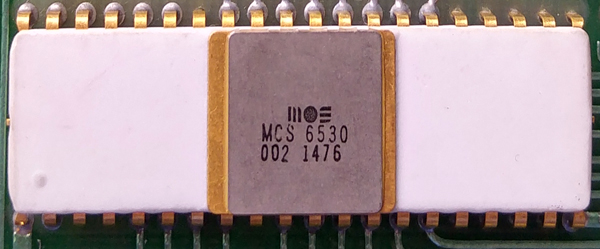
MCS6501 tot MCS6505 1975 datasheet
14 page datasheet
24 page datasheet

I discovered more unique 65xx IC’s in my stash of boards.
So more 6502, 6521, 6545,6522 and 6522 shown here!
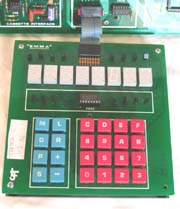
I have added two pages with photos and manuals of two 6502 SBC manufacturers:
EMMA and EMMA II by LJ Technical Systems. Educational SBC’s KIM-1 like, part of a whole eco system

John Bell Engineering, 82-300 SBC 6502, 6532 2716, 80-153 SBC 6522, 6502

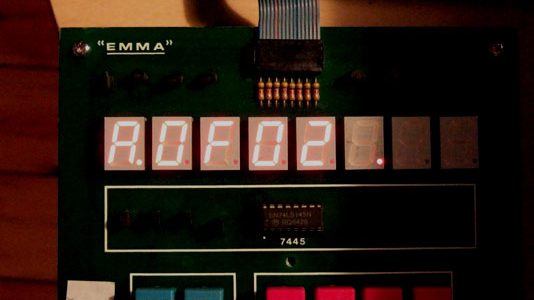
The EMMA and EMMA II SBC’s were produced by LJ Electronics Ltd, Norwich, a company established in 1979 to market training technology to colleges, schools and universities. The company behind LG Electronics still exists but is now known as LJ Create, also carrying the USA based brand Digiac.
Here you find information on:
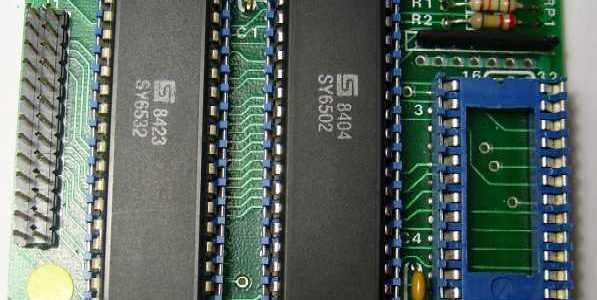
John Bell Engineering was a small firm producing microprocessor many boards between 1980 and 1990.
The early boards were 6502 and Z80 SBC’s, later boards were for the Apple II, and the last ones for the IBM PC bus.
I present here, what I have found, of John Bell 6502, Z80 and Apple ][ boards.
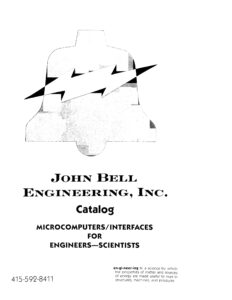 |
John Bell catalog 1984 |
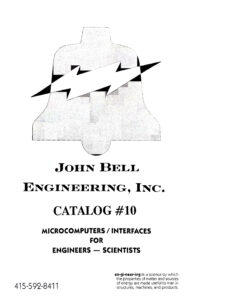 |
John Bell catalog 1988 |
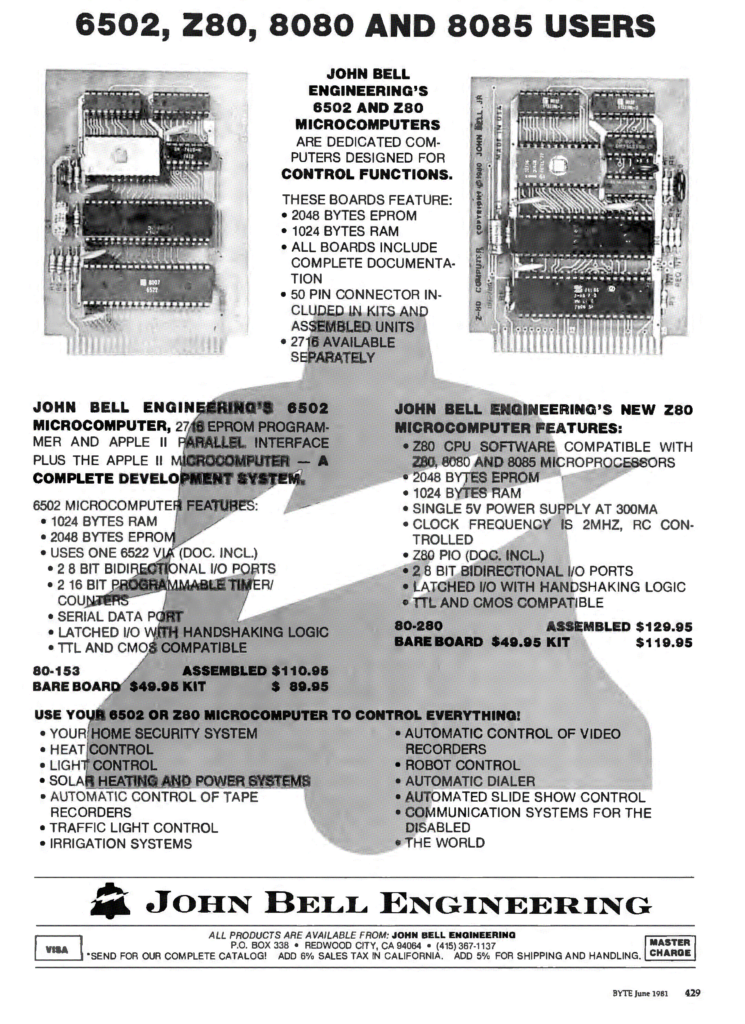
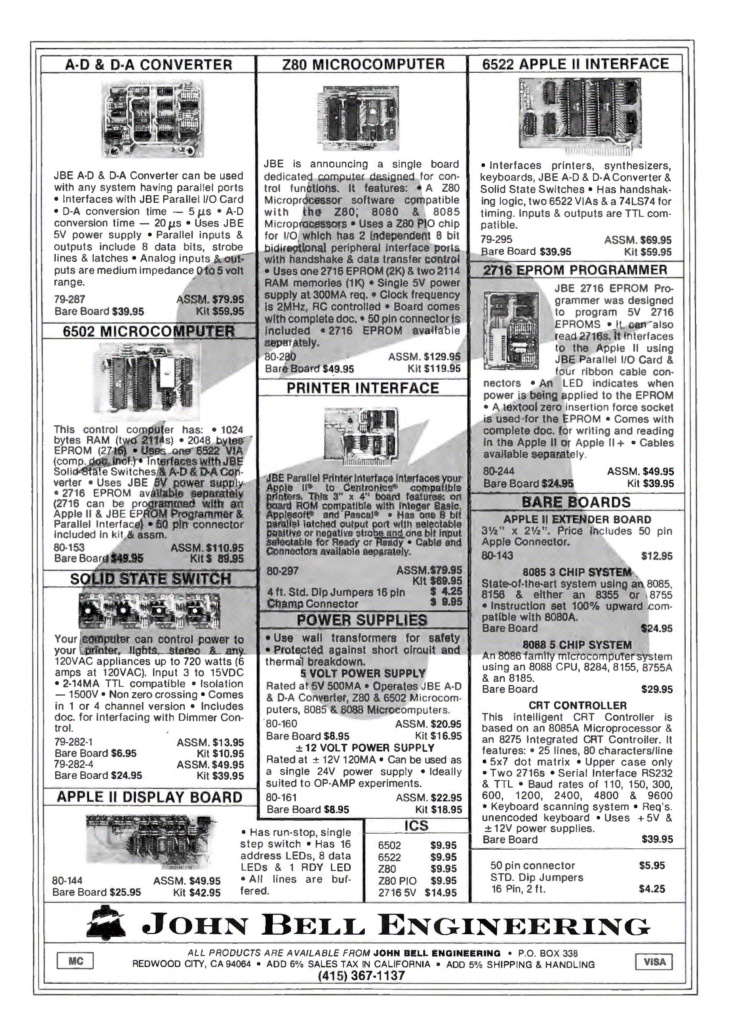
A new KIM CLone kit is coming!
Bob Applegate is filling in the gap left by Vince Briel, with his own design.
http://www.corshamtech.com/
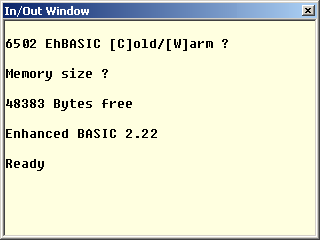
Bug in EhBASIC 2.22 Daryl Rictor et al (from a discusson on 6502.org)
The following works:
; Ibuffs can now be anywhere in RAM, ensure that the max length is $80 IRQ_vec = VEC_SV+2 ; IRQ code vector Ibuffs = IRQ_vec+$14
Whereas the following doesn’t:
; Ibuffs can now be anywhere in RAM, ensure that the max length is $80 Ibuffs = $0400 Ibuffe = Ibuffs + $47 ; end of input buffer
Of course be careful to make sure that Ram_base is quite faraway from Ibuffs.
So, Ibuffs can be anywhere in RAM that’s not $0400??
Any reason $0400 is magical?
Nope. $0400 is an example. $0500 gives you the same result: negative.
As long as Ibuffs is in the same page as ccflag and friends, it works. And ccflag can be at $0400.
Now, if you reference Ibuffs in relation to IRQ_vec (copy it over from min_mon.asm), then things work.
Perhaps someone somewhere made some assumptions of the page where Ibuffs need to be e.g. be in the same page as ccflag and friends etc.
The other problem is what I’ve already observed: the EhBASIC binary has to be located in memory higher than Ram_base and Ram_top. Otherwise strange things happen.
With Ibuffs set to $0400 AND Ram_base set to $0500, I did a Cold start and entered this line – 10 PRINT “HELLO WORLD”
I examined the memory at Ram_base and found that the stored line was formatted correctly. However, when I typed LIST, all I got back was HELLO WORLD, as if I had typed RUN. Typing RUN also returned HELLO WORLD. When I ran the SYS command (my added command to return me to my Monitor), it just ignored it and returned to the BASIC input prompt.
Next, I changed Ibuffs to $0401 and reassembled. This time, everything performed as it should.
Next, I set Ram_base to $0600 with Ibuffs set to $0400 and entered the same line. This time, LIST returned nothing. Examining memory at $0600, the stored line is there and is correct. RUN and SYS also return nothing.
Finally, I set Ram_base to $0600 and Ibuffs to $0401 and all worked as it should.
I think I found the problem… and it would explain the issue with Ibuffs and Ram_base being 1 page apart too.
This piece of code is the problem:
LAB_142A INY ; increment pointer INY ; increment pointer (makes it next line pointer high byte) STA Ibuffs,Y ; save [EOL] (marks [EOT] in immediate mode) INY ; adjust for line copy INY ; adjust for line copy INY ; adjust for line copy DEC Bpntrl ; allow for increment (change if buffer starts at $xxFF) RTS
Previously in the code, Bpntrl gets set to Ibuffs. When the DEC instruction gets executed, Bpntrl get set to $FF. Later in the code, we have this:
LAB_15F6 JSR LAB_IGBY ; increment and scan memory LAB_15F9 JSR LAB_15FF
The routine LAB_IGBY is located in zero page (to increase speed). it looks like this:
LAB_2CEE
INC Bpntrl ; increment BASIC execute pointer low byte
BNE LAB_2CF4 ; branch if no carry
; else
INC Bpntrh ; increment BASIC execute pointer high byte
; page 0 initialisation table from $C2
; scan memory
LAB_2CF4
LDA $FFFF ; get byte to scan (addr set by call routine)
CMP #TK_ELSE ; compare with the token for ELSE
BEQ LAB_2D05 ; exit if ELSE, not numeric, carry set
CMP #':' ; compare with ":"
BCS LAB_2D05 ; exit if >= ":", not numeric, carry set
CMP #' ' ; compare with " "
BEQ LAB_2CEE ; if " " go do next
SEC ; set carry for SBC
SBC #'0' ; subtract "0"
SEC ; set carry for SBC
SBC #$D0 ; subtract -"0"
; clear carry if byte = "0"-"9"
LAB_2D05
RTS
The code at LAB_2CEE will INC Bpntrl, which becomes $00 and then INC’s Bpntrh to $05. Now this pointer is pointing to the wrong page. And depending upon what is stored there, different things will happen.
This note is incorrect:
DEC Bpntrl ; allow for increment (change if buffer starts at $xxFF)
It should read (change if buffer starts at $xx00).
My fix would be to add this:
LAB_142A INY ; increment pointer INY ; increment pointer (makes it next line pointer high byte) STA Ibuffs,Y ; save [EOL] (marks [EOT] in immediate mode) INY ; adjust for line copy INY ; adjust for line copy INY ; adjust for line copy ; add patch for when Ibuffs is $xx00 - Daryl Rictor LDA Bpntrl ; test for $00 BNE LAB_142P ; not $00 DEC Bpntrh ; allow for increment when $xx00 LAB_142P ; end of patch DEC Bpntrl ; allow for increment RTS
I have tested this fix and it worked for me.
Daryl

Lee Davison
http://retro.hansotten.nl/lee-davison-web-site/
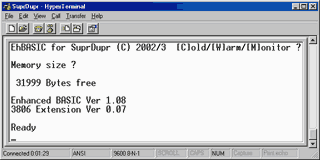
Enhanced BASIC 740, language reference.
Most of EhBASIC74 is identical in operation to 6502 EhBASIC so this page will just describe the keywords that differ from that version.
Code that doesn’t use the features of one version should run identically on the other.
BASIC Keywords
Here is a list of BASIC keywords that differ from the 6502 version of EhBASIC. They
are only valid when entered in upper case as shown and spaces may not be included
in them. So, for example, TIMER1 is valid but TIMER 1 is not.
| A2D | CLEAR | CNTR0 | CNTR1 | COUNT | D2A1 |
| D2A2 | EVENT | FLUSH | INT0 | INT1 | INT2 |
| INT3 | INT4 | IRQ | NMI | ON | OFF |
| PRES12 | PRESX | PRESY | PULSE | PWM | RETIRQ |
| RETNMI | RETURN | START | STOP | TIMER | TIMER1 |
| TIMER2 | TIMERX | TIMERY | + | – |
Anything in upper case is part of the command/function structure and must be present
Anything in lower case enclosed in < > is to be supplied by the user
Anything enclosed in [ ] is optional
Anything enclosed in { } and separated by | characters are multi choice options
Any items followed by an ellipsis, … , may be repeated any number of times
Any punctuation and symbols, except those above, are part of the structure and must be included
| var | is a valid variable name |
| var$ | is a valid string variable name |
| var() | is a valid array name |
| var$() | is a valid string array name |
| expression | is any expression returning a result |
| expression$ | is any expression returning a string result |
| addr | is an unsigned integer in the range +/- 16777215 that will be wrapped to the range 0 to 65535 |
| b | is a byte value 0 to 255 |
| n | is an integer in the range 0 to 63999 |
| w | is an integer in the range -32768 to 32767 |
| i | is a +ve integer value |
| r | is real number |
| +r | is a +ve value real number (0 is considered +ve) |
| $ | is a string literal |
BASIC74 Commands
FLUSH
This command, specific to version 1.10 on, clears the input buffer of any pending keystrokes. The buffer is also cleared by CLEAR and RUN.
INTx {ON|OFF|CLEAR}
Changes INTx event handling (where x is one of 0, 1, 2, 3 or 4).
ON
Enables the INTx handling subroutine after it has been turned off.
Note If a INTx event occured while the INTx event handling was disabled then it will be actioned immediately after this command.
OFF
Disables the INTx handling subroutine but does not remove the assignment. INTx events that occur while the handler is disabled will still be flagged for action.
CLEAR
Cleares the INTx handling assignment. After an INTx CLEAR the handling subroutine can only be restarted with an ON INTx command.
Sets the detection edge for INTx (where x is one of 0, 1, 2, 3 or 4). + sets a low to high transition (positive edge) as the trigger, – sets a high to low (negative edge) as the trigger. The default is -. Note that changing the trigger edge when the interrupt is enabled may cause the interrupt to trigger.
Changes CNTRx event handling (where x is either 0 or 1).
ON
Enables the CNTRx handling subroutine after it has been turned off.
Note If a CNTRx event occured while the CNTRx event handling was disabled then it will be actioned immediately after this command.
OFF
Disables the CNTRx handling subroutine but does not remove the assignment. INTx events that occur while the handler is disabled will still be flagged for action.
CLEAR
Cleares the CNTRx handling assignment. After a CNTRx CLEAR the handling subroutine can only be restarted with an ON CNTRx command.
Sets the detection edge for CNTRx (where x is one of 0 or 1). + sets a low to high transition (positive edge) as the trigger, – sets a high to low (negative edge) as the trigger. The default is -. Note that changing the trigger edge when the interrupt is enabled may cause the interrupt to trigger.
Sets the value for prescaller q (where q is one of 12, X or Y).
TIMERp {TIMER|PWM|COUNT|PULSE}
Sets TIMERp timing mode (where p is either X or Y).
TIMER
The timer (X or Y) counts down (f/16)/(1+PRESq)/(1+TIMERp).
PWM
If the corresponding active edge selection bit (CNTR0 for timer X, CNTR1 for timer Y) is “0” (CNTRx -) then the counter counts as in timer mode while the pin is at “1”.
If the corresponding active edge selection bit (CNTR0 for timer X, CNTR1 for timer Y) is “1” (CNTRx +) then the counter counts as in timer mode while the pin is at “0”.
The Prescaller and timer latches are preset to $FF by setting this mode and when the selected event (-ve or +ve edge) happens the prescaller and timer values are copied and available to BASIC using the TIMERp (where p is either X or Y) function.
COUNT
The same as timer mode except pulses on the corresponding counter pin (CNTR0 for timer X, CNTR1 for timer Y) are counted. Selecting this mode also sets the corresponding pin to input mode.
PULSE
As timer mode except when the timer reaches $0000 the counter pin (CNTR0 for timer X, CNTR1 for timer Y) is inverted. Selecting this mode also sets the corresponding pin to output mode.
Enables or disables counting for TIMERp (where p is either X or Y).
Changes TIMERq event handling (where q is one of 1, 2, X or Y).
ON
Enables the TIMERq handling subroutine after it has been turned off.
Note If a TIMERq event occured while the TIMERq event handling was disabled then it will be actioned immediately after this command.
OFF
Disables the TIMERq handling subroutine but does not remove the assignment. TIMERq events that occur while the handler is disabled will still be flagged for action.
CLEAR
Cleares the TIMERq handling assignment. After a TIMERq CLEAR the handling subroutine can only be restarted with an ON TIMERq command.
TIMERq <b>
Sets the value of TIMERq (where q is one of 1, 2, X or Y).
This command has been removed from EhBASIC74. It’s function is now handled by an enhanced RETURN command.
This command has been removed from EhBASIC74. It’s function is now handled by an enhanced RETURN command.
As well as returning program execution to the next statement after the last GOSUB in EhBASIC74 RETURN also restores execution to the next statement after event
subroutine has been executed. RETURN checks the type of event and automatically restores the enabled flag for the interrupt that caused the event.
See INTx {ON|OFF|CLEAR}, CNTRx
{ON|OFF|CLEAR} or TIMERq {ON|OFF|CLEAR}.
See INTx {ON|OFF|CLEAR}, CNTRx
{ON|OFF|CLEAR} or TIMERq {ON|OFF|CLEAR}.
See INTx {ON|OFF|CLEAR}, CNTRx
{ON|OFF|CLEAR} or TIMERq {ON|OFF|CLEAR}.
These commands have been removed from EhBASIC74 as there is no IRQ or NMI interrupt on the 740 series microprocessor.
Set up the INTx routine pointers (where x is one of 0, 1, 2, 3 or 4). This sets up the effective GOSUB line that is taken when an interrupt happens. When the effective GOSUB is taken the interrupt, INTx, is turned off. The interrupt is turned back on when normal program flow is resumed by a matched RETURN command.
Set up the CNTRx routine pointers (where x is one of 0 or 1). This sets up the effective GOSUB line that is taken when a counter interrupt happens. When the
effective GOSUB is taken the interrupt, CNTRx, is turned off. The interrupt is turned back on when normal program flow is resumed by a matched
RETURN command.
Set up the TIMERq routine pointers (where q is one of 1, 2, X or Y). This sets up the effective GOSUB line that is taken when a timer interrupt happens. When the
effective GOSUB is taken the interrupt, TIMERq, is turned off. The interrupt is turned back on when normal program flow is resumed by a RETURN
command.
This command has been removed from EhBASIC74 as there is no IRQ interrupt on the 740 series microprocessor.
This command has been removed from EhBASIC74 as there is no NMI interrupt on the 740 series microprocessor.
Output byte b as an analog voltage on D-A port x (where x is 1 or 2). Setting either convertor also sets the corresponding pin to analog output mode.
D2Ax {ON|OFF}
Enables or disables the D2Ax output (where x is one of 0 or 1).
See INTx {+|-} or CNTRx
{+|-}.
See INTx {+|-} or CNTRx
{+|-}.
BASIC74 Functions
Functions always return a value, be it numeric or string, so are used on the right hand side of the = sign or in commands requiring an
expression e.g. after PRINT, within expressions, or in other functions.
Returns the value of the A-D convertor input b, where b is 0 to 7. Any value for b outside this range will cause a function call error.
Returns a boolean value. If any enabled interrupt has occured since EVENT was last examined then EVENT will return -1 else EVENT will return 0
Returns the count value from TIMERp (where p is either X or Y). As this is a count down timer the value returned is first subtracted from zero then returned as if it had been DEEKed from the timer registers. This function is only of any use when TIMERp is being used in PWM mode.

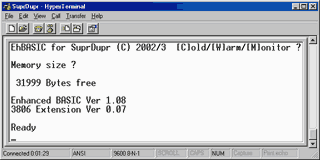 Enhanced BASIC74 is a BASIC interpreter for the 740 microprocessor family. It is constructed to be quick and powerful and includes instructions to facilitate easy low level handling of 740 family hardware devices. It also retains most of the powerful high level instructions from similar BASICs.
Enhanced BASIC74 is a BASIC interpreter for the 740 microprocessor family. It is constructed to be quick and powerful and includes instructions to facilitate easy low level handling of 740 family hardware devices. It also retains most of the powerful high level instructions from similar BASICs.
EhBASIC74 is derived from EhBASIC for the 6502 and shares much of the code used in that BASIC. However EhBASIC74 also includes enhancements to make it specifically more usefull on the Mitsubishi 740 series of single chip micros. While it was developed on the M38067 it should be possible to run it on most of the 740 family with only minor modifications.
EhBASIC74 is free but not copyright free. For non commercial use there is only one restriction, any derivative work should include, in any binary image distributed, the string “Derived from EhBASIC” and in any distribution that includes human readable files file that includes the above string in a human readable form e.g. not as a comment in an HTML file.
19th June 2003.
Confusingly the main version number is now the 3806 specific version number so, while the generic BASIC version is still 1.09, this incarnation is 1.10.This adds an interrupt driven receive buffer and an extra command to help use it. Go see the language reference for details.
18th June 2003.
This is the last version for the SuprDupr and SuprChip boards that will use polled input. The next version will have an interrupt driven Rx buffer for better response. As such version 1.09 will remain available for download here.
The SuprDupr has a PS2 style socket for an AT keyboard. However, as it arrived, the data and clock go to the GAL and so were jumped directly to port 7, bits 7 and 6, on the micro. There are also positions for pullup resistors on both the keyboard data and clock lines, these are not needed and were omitted. These details may have changed as this was an early production board.
The software is unfinished and provided as a starting point for anyone who wishes to make their own. As provided the driver provides very reliable basic keyboard handling. During developement it was noticed that the keyboard driver would sometimes hang so some test code was added to monitor the reliability (included in the source but commented out) and it was found that the routine wouldn’t return about once in every 750,000 calls.
This was eventually traced to a faulty keyboard but highlighted the vunerability of the code to spurious responses from the keyboard. As a result the robustness of the code was improved by adding timeouts and the resulting code proved reliable over hundreds of millions of calls.
The SuprDupr has a port wired to enable use of many inteligent LC displays. The display, pictured right, is an LC7980 type though most of the other graphics and
text types are similarly driven.
One change needed to be made to the SuprDupr to use this display and that was to disconnect the earthy end of the contrast pot from 0v and connect it to the -ve
charge pump output on the MAX232 chip. This is because the greater multiplex on these graphics displays requires a more -ve bias to maintain the viewing angle.
A down side to this is that display contrast is effected by the loading on the RS232 port and use of such things as a RS232 line monitor can have an adverse
effect on the display. Also if the load from the display is to great then the MAX232 charge pump will not start. However this should not be a problem in normal use.
Another change made to the SuprDupr was to wire +12v to the spare pin on the LCD port to provide power for the backlight. This could be connected through a PNP
transistor and controlled by software via one of the port pins.
The software is unfinished and provided as a starting point for anyone who wishes to make their own. It is usable and was used to produce the displays pictured above and below.
I wanted a quick way to connect an 8 bit ISA slot, only to access the IO adresse range, to the SuprChip V microcontroller. The circuit I came up with appears on the right.
The address lines A5 to A15 can either be set using jumpers or switches (I used switches) or, if you only need one address range, can be hard wired to the corresponding address.
Any of the five interrupt lines, from IRQ3 to IRQ7, can be selected by the use of a jumper. Again if you will only need one (or none) of these then the desired interrupt can be hard wired.
This circuit could be fairly easily adapted as a memory mapped device by connecting the corresponding address and data lines (possibly through buffers), by driving the IOR and IOW pins with decoded read and write signals, and by connecting the interrupt, via an invertor, to the NMI input on the processor. The RESET line can be driven, again via an invertor, by the processor RESET line or by an output port line. This line is active high.
While experimenting with different network cards I discovered some of them need the +12v supply in addition to the +5v supply. This additional connection is shown in red on the diagram.
As I had a stack of 3Com 3C509B NICs of various types I decided to try to use them. Well it turns out that even with PnP disabled you still need to access the card’s id port on $01xx. To allow this Port 6 bit 6 was connected to the A9 line, so both $03xx and $01xx can be accessed by the software. This additional connection is shown in green on the diagram.
Though the slot can be accessed entirely from EhBASIC it was decided to create two short routines to make accessing the slot faster and easier. To that end one function, to read a byte, and one subroutine, to write a byte, were written.
After initialising the function and subroutine addresses thus ..
.. 30 DOKE $44,$EF20 : REM USR(n) = read from IO address $xxnn 31 rr = $EF00 : REM call address for write to IO address ..
It is a simple matter to write a byte by doing ..
20500 CALL rr,cr,dd : REM set control register 20505 REM cr is the IO address - $00 to $1F 20510 REM dd is the byte value for that IO address
.. and read a byte by doing ..
10050 by = USR(cr) 10055 REM cr is the IO address - $00 to $1F 10060 REM the byte value is returned to by
You can download the assembly source for the read and write routines.